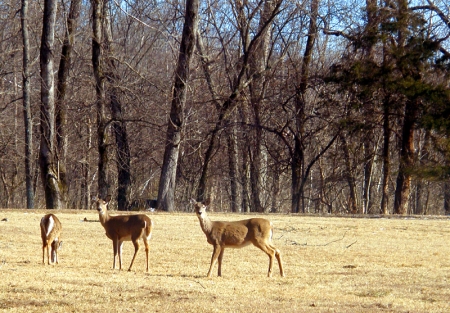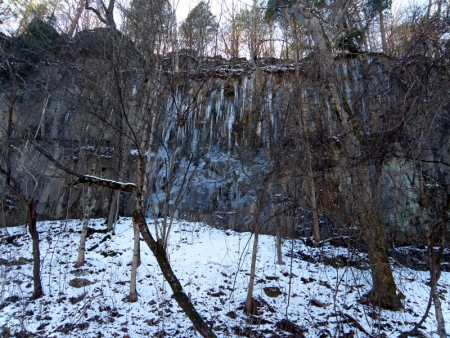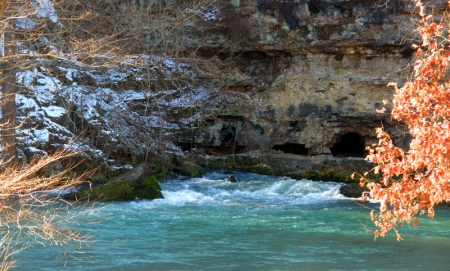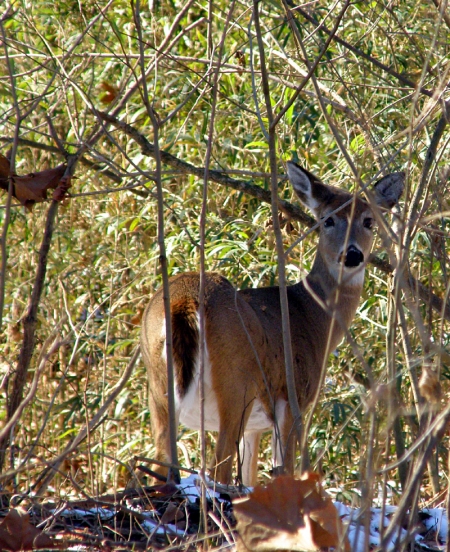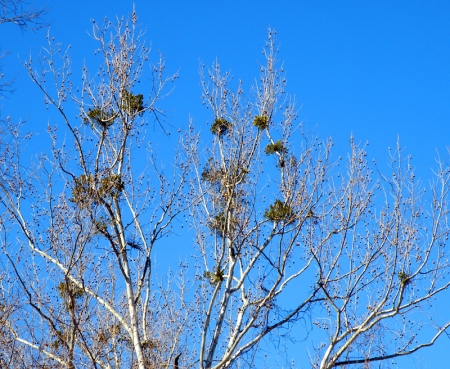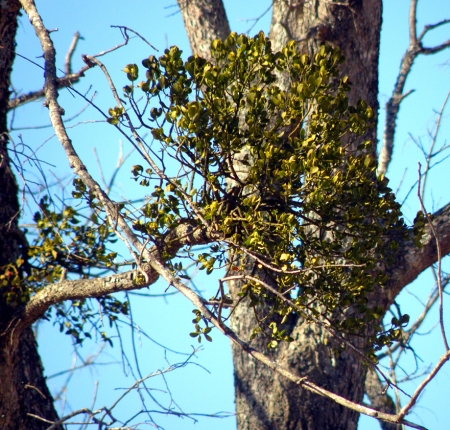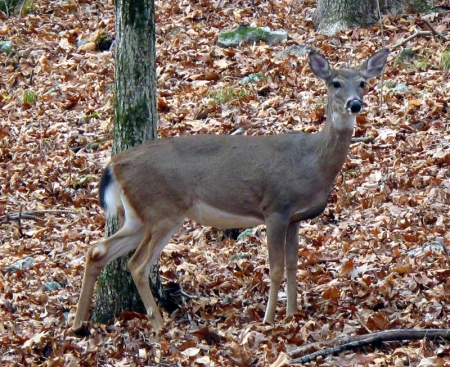Even as an IT person, I do occasionally get to leave my office thanks to the fact that most of our various field offices have computers and phone systems. And sometimes, I even remember to take my camera with me.
Two or three days ago, I needed to visit both the district ranger’s office and the fire cache at Big Spring. They’re located about 2 miles apart and these photos were shot as I made the drive from the former to the latter.
The Big Spring area is a wildlife refuge and the deer are very tame. Groups of does and yearlings are frequently seen about during the day, but bucks still tend to make themselves scarce. This group, the first of several, was in the field near the Lodge.
Just around the corner, along the beginning of the Spring Trail, were some attractive icicles hanging from the bluff. This bluff is north facing and there is still snow present while it’s melted from most everywhere else.
As many times as I’ve seen it, I still can’t drive past Big Spring without stopping (and usually taking a photo if I have a camera in hand.)
Big Spring discharges some 286 million gallons on an average day. But we’ve had a wet fall and winter and, according to the USGS, it was flowing at a rate of 604 cubic feet per second when this photo was taken. By my calculations that comes to just over 390 million gallons per day. I’ve been researching Big Spring and some of the other large springs of the world lately and hope to pull all of that data into a post or two in the near future.
A second group of deer was feeding in the field by the spring. They were a bit more skittish than the first group and quickly moved off into the cane thicket across the road.
Just past the road to the boat landing there are a couple of sycamores that are host to a number of Mistletoe plants (Phoradendron sp.)
Mistletoe, aside from being a popular Christmas decoration, is also a parasite. Parasitism only evolved nine times in the plant kingdom and five of those were mistletoes.
Ironically, mistletoes themselves serve as hosts to several parasitic fungi.
Moving on, the last deer of the day were near the road to the campground. There was a yearling with this doe, but still no bucks.
Actually, come to think of it, all of the bucks should have dropped their antlers by now. So of the twelve or fifteen deer I saw, one or more could have been a buck, but I don’t think so.
